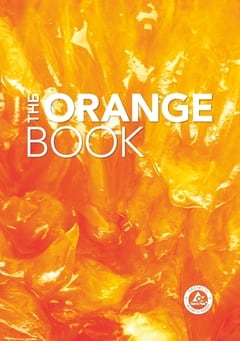Approximately 70 million tonnes of oranges are produced per year worldwide. About a third of the total tonnage is processed, the rest being consumed as fresh fruit.
Minimal impact

Tetra Pak claims on average, the pasteurization process reduces the amount of vitamin C by less than 2%.
“Juice remains a significant part of the average consumer diet around the world. Our studies show pasteurization causes minimal impact on vitamin C retention while securing a safer product with longer shelf life for the consumer,” said Maria Norlin, sub-category manager, Juice, Nectars and Still Drinks, Tetra Pak.
“We hope this (study) gives customers the evidence they need to communicate the nutritional values of orange juice with consumers.”
The Tetra Pak Orange Book covers the entire orange juice production chain, from quality control of the fruits to regional consumer insights.
Florida and Brazil are the world’s largest juice-producing countries. Here, the majority of fruit harvested is processed because the orange varieties in these regions are grown for processing rather than for direct consumption. Together these regions account for about 80% of global orange juice production.
Where possible, growers prefer to sell oranges to the fresh fruit market as their price is normally higher than for fruit sold for processing into juice. In some countries this can lead to a significant variation in the amount of fruit processed from one year to another.
‘Due to the planting of new trees, world orange production continued to increase into the early 2000s – mainly in Florida, Brazil and China,’ the report states.
‘Orange production is also expected to increase further in other regions as a result of improved planting programmes, cultivation techniques and support to orange growers.
‘Nevertheless, unwanted climatic effects like frost and storms, along with uncontrolled fruit tree diseases, could reduce crops and juice yields significantly.
‘Recent years have seen notable fluctuations in world orange production, and since 2010 the global harvest has declined as a result of unfavourable weather and diseases in major production areas.’
China
According to Tetra Pak, China has seen the fastest growth in citrus fruit production through the intensive planting of trees and is today the world’s largest producer.
Mandarins make up the majority of the citrus crop. Most oranges in China are consumed fresh, with only a small amount of fruit being processed.
The Mediterranean is an important region for growing high-quality fruit. As more Mediterranean oranges are being eaten fresh, juice production is gradually declining in this region, with the exception of Spain.
Orange processors can be divided into two groups:
- Marketing processors
- Bulk processors
Marketing processors sell packaged juice under their own brand name, which requires retail and consumer marketing skills.
Bulk processors mainly sell their products in bulk form, which requires skills in the efficient distribution and marketing of a commodity.
The largest marketing processors are based in Florida and include Tropicana (part of PepsiCo group), and Citrus World. These companies process fruit into juice and fill it into retail packages at their own facilities. They also buy additional juice in bulk form from other bulk processors.
For marketing processors, control of product availability is regarded as more important than ownership of manufacturing assets. As an example, Coca-Cola now focuses on marketing and distributing Minute-Maid and Simply Orange brands; Brazilian company Cutrale owns and operates the juice production facilities.
Bulk processors produce the majority of orange juice worldwide. Bulk delivery is the priority for the large Brazilian processors. They do not have their own consumer brands, partly to avoid competing with their bulk juice customers.
The report states the last decade has seen major changes in Brazil’s orange juice industry, with a reduction in the major players from five to three.
Citrusuco
In 2004 Cargill divested its processing plants to industry leaders Cutrale and Citrusuco. In 2011 the latter merged with Citrovita and the new enlarged entity, called Citrusuco, is now the largest processor ahead of Cutrale and Louis Dreyfus.
Several terminal installations around the world are dedicated to receiving and shipping frozen concentrated orange juice (FCOJ) using tankers.
The larger Brazilian processors own terminals in Brazil for exporting bulk products and terminals in Europe, the US and Japan for importing FCOJ. These companies also own several large tanker ships designed and dedicated to transporting FCOJ. Since the early 2000s they also operate specially designed bulk ships and terminals for handling chilled aseptic NFC.
Bulk processors make their money from the difference between bulk concentrate prices and fruit prices – the bulk processing margin. Florida bulk processors are very vulnerable to the wide fluctuations in FCOJ prices and need to use the protections offered by the commodity trading market in a similar way to their Brazilian counterparts.
NFC, which has enjoyed strong growth in Florida and now accounts for more than 60% of processed fruit, offers superior margins to FCOJ for Florida juice producers. Bulk processors supply NFC to juice packers and marketing processors, but some also co-pack in their own facilities.
Brazilian processors are also shifting to increased NFC bulk production, both for overseas export and to meet the growing demand in the Brazilian and South American markets. Today, about 20% of oranges are processed into NFC.
